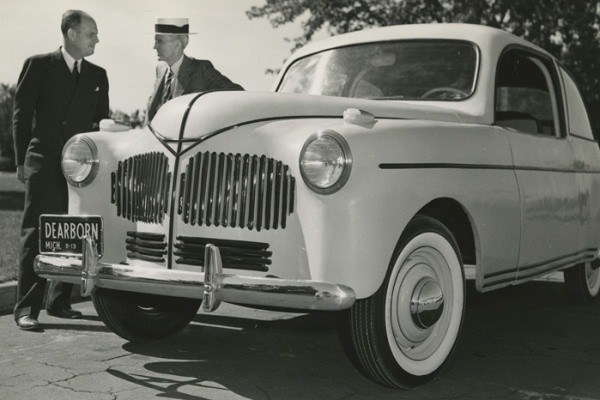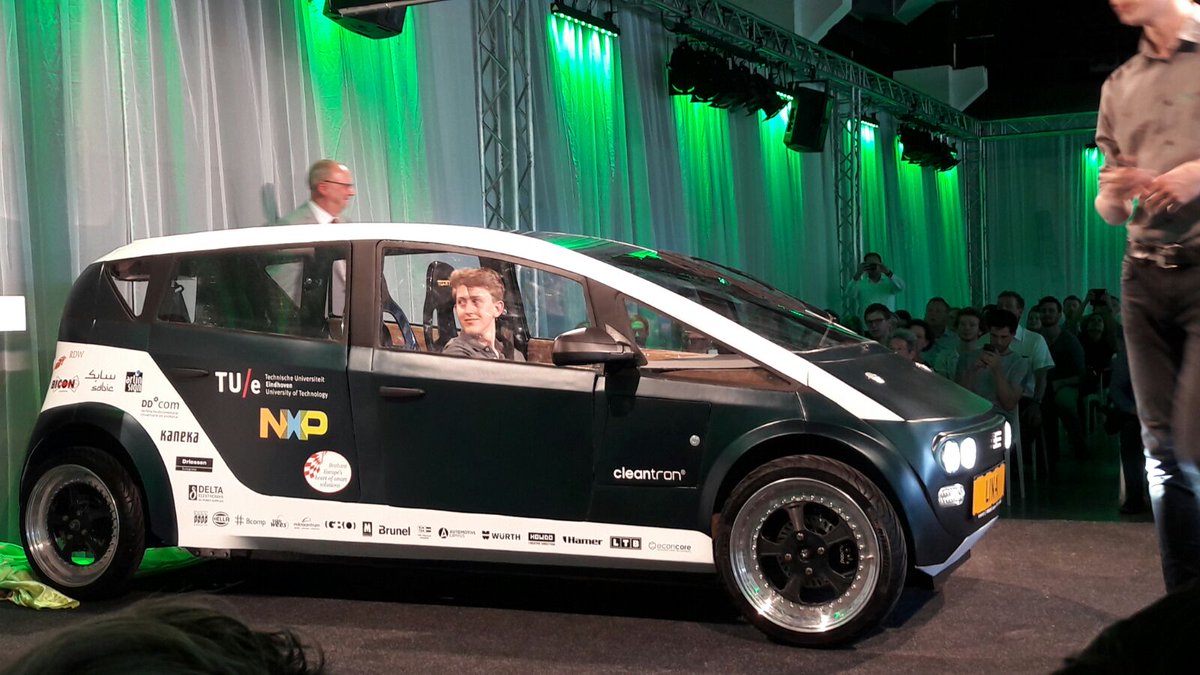If students from the Eindhoven University of Technology in the Netherlands have their way, we’ll enjoy the option to buy cars made from plant materials, the greenest thing since the invention of the solar panel.
They built a bio-based car to demonstrate that it’s possible. Their car, they call the EM-04 Lina. The Lina isn’t necessarily a looker, but considering a group of students built it, the car begs the question: what could someone from the car industry produce using the student’s blueprints?
It’s unlikely anyone will buy a complete car made of bio-based materials anytime soon, but the ideas put forth by these ambitious students may creep into auto-manufacturing down the line.
In fact, you may already be driving a car with similar parts.
Bio-based Plastics

Ford’s soybean car | macsmotorcitygarage.com
This is not a new idea. Henry Ford was a fan. He made his famous plastic car from soybean plant parts, an idea buried by time, but recorded by historians. We see you, Ford.
Since we make plastics with oil, deriving more Earth-friendly oils is as easy as growing hemp or some other easy-to-grow plant.
The Netherlands team used flax, presumably the oil from the seeds, infused with sugar beets for stiffness. They coated the parts to prevent them from disintegrating in the rain, something that would spoil a Sunday drive.
Lightweight Design
To power their car, the students employed batteries and two DC motors. It’s light enough that two able-bodied adults can move the back end of the car like lifting a couch.
It weighs 683 pounds, but most of that weight is at the front. That’s a far cry from the lightest models on the streets today, which employ other materials like aluminum or fiberglass.
“Processing of these materials, however, requires 5 to 6 times more energy than steel, the material which they replace,” said one of the students in a recent interview. “Consequently, energy that is saved while driving the car is now spent during the production phase. In addition, recyclability of these lightweight materials is lacking significantly compared to steel.”
The Reality Of This Idea
Lina isn’t just a show car. The Netherlands Vehicle Authority certified their invention as roadworthy. It can even carry four people about, assuming style and comfort don’t matter to those travelers.
The feasibility of these composites making to everyday commuter cars is a matter of marketing. We already employ fiberglass, not much different than the sugar beet-flax fiber panels on Lina.
The strength of these materials is similar.
What would prove the value of these materials is a run through the U.S. vehicle safety authority, the NHTSA. Were it able to demonstrate competency there… Look out, World.
Lina is more than a hippie’s nocturnal emission. It’s a technologically advanced car too. The students employed Near Field Communication technology so the car can recognize different drivers, passengers, and more as they see fit.
As a stand alone, this would be a huge smart upgrade to any car, which begs one more question: why hasn’t this happened yet?



